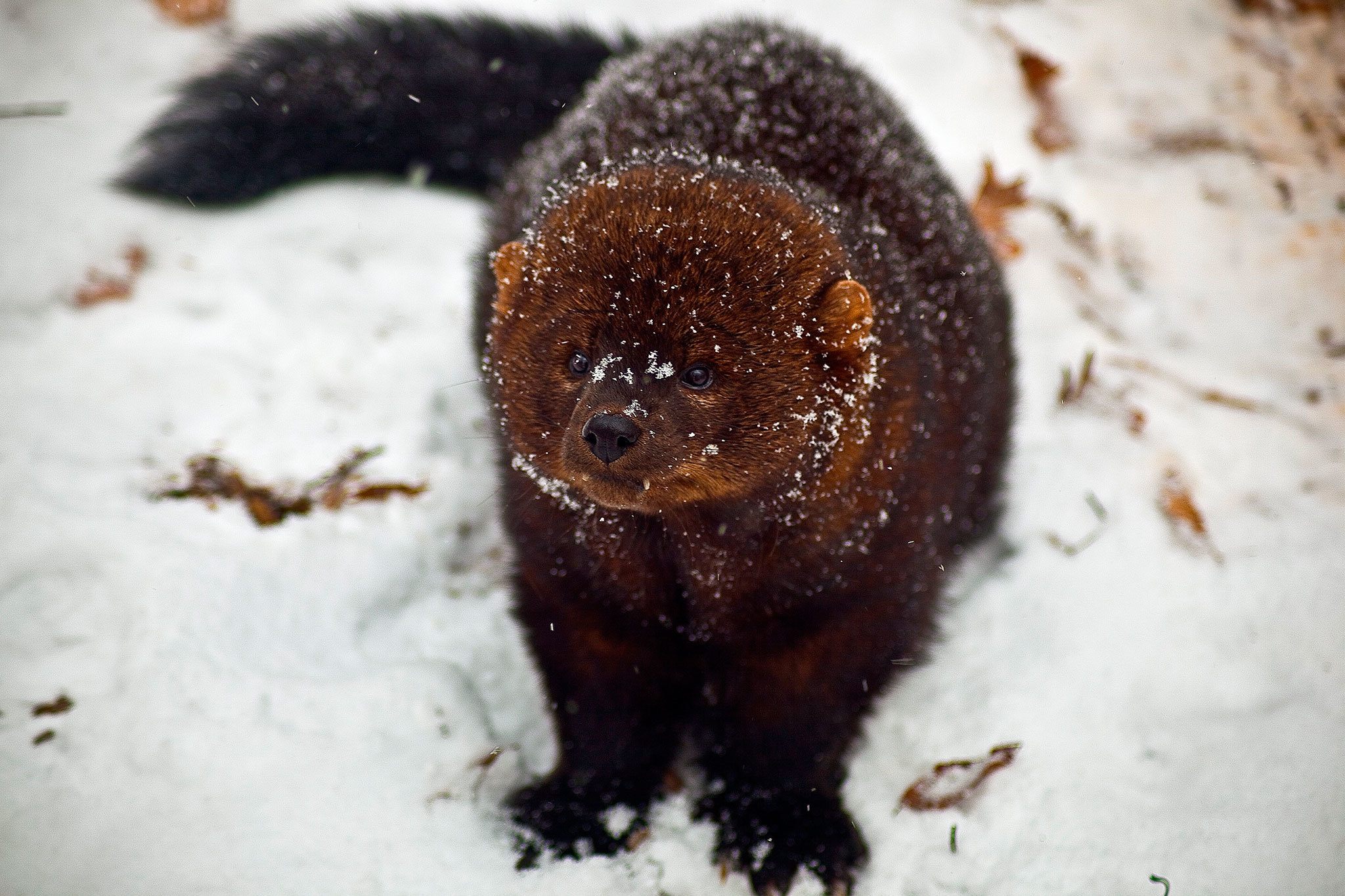If the wolverine was the weasel family’s bid for world domination, its cousin the fisher is the ninja warrior.
Roughly the dimensions of a big, very athletic house cat and quick enough to catch the martens that can catch squirrels, fishers arguably represent one of the pinnacles of predator evolution.
Bobcats and cougars occasionally kill them, but fishers are tough enough and fast enough that most predators seldom consider it worth the trouble.
They’re members of the weasel family, which includes weasels (of course), skunks, otters, martens, mink, badgers and wolverines. In the old days, fishers sometimes followed trap lines to eat trapped animals, and then maybe hose down the area with a ghastly skunk-like musk.
They don’t fish; the name might derive from the Dutch word “visse” meaning “nasty” or the same spelling in French with an accent means “screwed” as in “Sacre Bleu! Zees veasel ruin my furs! Now I am visse!”
At any rate, throw in the typically savage fearlessness of the weasel family and it was enough to earn them the grudging respect of early French and English trappers and the name stuck.
Warm clothing makes the winter easy, but sometimes that ain’t so good for the original occupant. Back when fur was in fashion, a lot of people earned extra cash running a trap line or two in the winter months, and unfortunately for fishers, they wear the highest value clothing of any North American mammal, except maybe sea otters.
Catching a fisher was cause for celebration and they were trapped hard. They became rare over most of their range and were eliminated from the Olympics sometime in the early 1900s.
In 2008, Olympic National Park reintroduced a few fishers to remote areas of the park with individuals live-trapped in Canada. Everyone thought they were denizens of only the most remote wilderness, but that’s probably because those were the only ones left. Well, they surprised everyone by promptly ranging far and wide.
Most of the fishers remain in the Olympic wilderness, but a male was recorded toward Ocean Shores, another near Neah Bay. A fisher expert in Port Angeles saw one digging mice in his compost. Another one was reliably sighted in Railroad Bridge Park in 2015. DNA analysis of hair samples indicates several successful generations have followed the original releases.
Reproduction in fishers usually involves delayed implantation. They mate soon after giving birth, but the fertilized embryos somehow enter a stage of suspended animation before resuming development in time for spring birth. So the pregnancy lasts a whole year, but only 60 days are active. Weird.
When a fisher is deciding what to have for breakfast, lunch or dinner, the choices are usually meat, meat or meat. On the peninsula here they’re doing pretty well on squirrels, birds, snowshoe hares and whatever else presents itself. Outside the park, well, all those young forests are just about carpeted with mountain beavers with maybe a few rats sprinkled around for garnish. For a professional like the fisher, that’s the easy life.
For carnivores in general, fresh is always best, but virtually all of them will eat dead animals in a pinch and fishers have been known to eat fruit and insects as well. We don’t have very many porcupines here on the peninsula, but elsewhere fishers are one of the few predators that bother to kill and eat them on a regular basis, including quills (That’s true; I ain’t making it up). Since porcupines love to eat the tops off of young conifers, modern foresters have become fisher fans.
Tipping the scales between 5 and 12 pounds, males are half again or even twice the size of females. Maybe a few square miles of good habitat is enough for a female to live out her whole life, but males apparently range much farther in search of territory and mates, not always returning to the home ranch.
Remember when wolves were re-introduced to the Yellowstone area? The elk got so nervous that they quit lounging around the streams and rivers all the time and went back to traveling around like they used to. Bushes and trees returned to the streamsides and soon so did the songbirds. Not long after that, fly fishermen cussing the line-snagging brush noticed the fishing was a lot better in those shady streams.
Who’da thunk it? Putting wolves back would lead to more birds and fish!
In the years to come it will be really interesting to see how restoration of an important predator like the fisher will affect our Olympic ecosystems. So far it seems like they’re just glad to be home.
Tom Butler has a degree in zoology from the University of Washington and is a lifelong student of nature. He lives in Port Angeles and can be reached at butlert@olypen.com.



